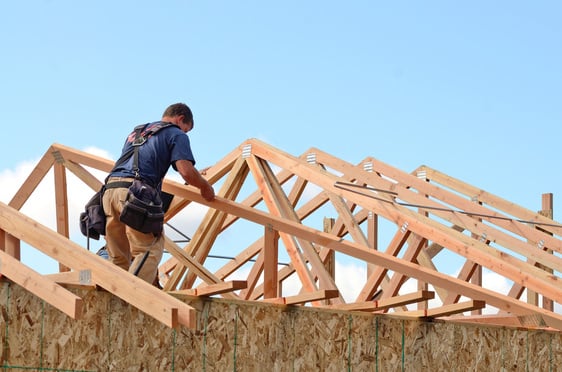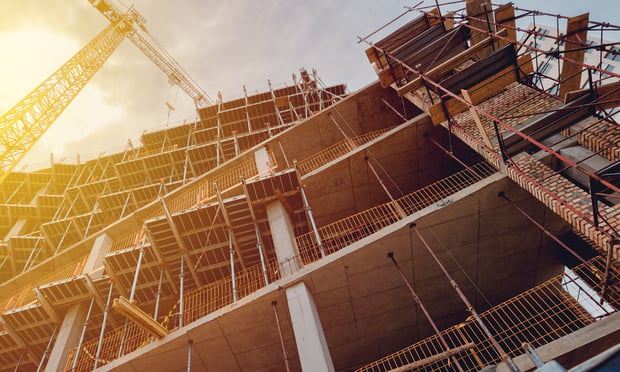Touchstone's director of acquisitions Scott Murphy tells GlobeSt.com that amount of development here is enormous but almost all residential at this point. "We actually entered the market two years ago and saw a niche in the office sector," he says. "We saw multinational growth and expansion and no quality office space available."
Indeed, the 12 million sf of class A space in this 30-million-sf office market is more than 97% leased and the newest building is four years old. Moreover, Murphy says there are more than two million sf of requirements in the market--from companies like IBM, Chevron, EDS and several European companies--looking for quality space and, at least for the next couple of years, no place for them to go.
"We will be fully leased before we finish construction," says Murphy, whose project is two-and-a-half years from completion. "There is nothing under construction."
In a mid-year 2006 report, Colliers stated that class A vacancy stood at 2.3% with little new supply is on the horizon. "In 2007, only 26,000 square meters of class A/A+ will be built and in 2008 only 70,000 square meters--50,000 square meters of which will be occupied by Repsol YPF," states the report. "This means that the future supply will not be enough to meet the average annual level of net absorption of the last three years [100,000 square meters]."
The problem, according to Colliers and others, is that the likely developers, the ones who have previously developed in the market, are still cautious because they are still feeling the effects of the country's economic collapse in 2002. The collapse, which has been likened to the Great Depression, followed three years of recession. The country's economy contracted by between 10% and 20%, according to published reports.
As a result, office rents that had peaked at between US$40 and US$45 per square meter per month fell to a low of US$8 to US$12 per month and many office building owners were forced to downwardly adjust their rents in order to retain tenants. Three years of rapid economic recovery fueled by mining and agriculture has pushed new and renewal rents in class A office buildings to between US$22 to US$30 per sf per square meter per month, but many building owners still aren't right enough to begin developing again, Colliers says.In addition to caution, new Downtown development is being limited by a lack of development sites. As the residential market rebounded more quickly than the office market, many sites zoned for office development were rezoned for residential. As well, investment sales are being limited by the fact that most buildings are commercial condominiums, owned by a mix of users and investors. There are office properties to be had, however, says Murphy, and Touchstone is on the hunt while it moves forward with its office development. In either scenario, Murphy says Touchstone's pro forma is for an IRR of approximately 30%.
"The opportunity is two fold," Murphy says in a report to its investors. "One is to buy class A assets at current pricing, adjust the in-place rents to market, ride along with the economic recovery, allow the investment market to mature, and sell into a higher market," he says. "The other is to build office properties to meet the requirements of multinational corporate users, taking advantage of the low cost of local labor while achieving high rents given the recovery," and then like the first scenario, "ride along with the economic recovery, allow the investment market to mature and sell into a higher market."
One major player in the market, IRSA, isn't in construction mode but has been acquisitive. The publicly held company late last year snapped up some of the low-hanging fruit, acquiring Edificio Republica for US$74 million and, for $85 million, Bouchard Plaza. The two buildings represent two completely different plays.
Bouchard Plaza is a fully leased building acquired at a 6% yield on in-place income. In-place rents are approximately $15 per square meter per month but IRSA expects to raise those to market as leases expire while also upgrading the tenant mix. Edificio Republica, one of the market's trophy buildings completed in 1997, was acquired largely empty after the economic collapse prompted a foreclosure.
IRSA now owns 15 office properties in Buenos Aires. As of mid-year 2006, its occupancy rate was 96.87% and its tenant list is impressive. Its seven largest tenants are Grupo Total Austral, Finterbusch Pickenhayn Sibille S.C. (KPMG), Microsoft Argentina S.A., Grupo Danone, Vintage Oil Argentina, Allende Brea Sociedad Civil and Cisco Systems Argentina S.A.
One newcomer is Merrill Lynch Real Estate, which late last year formed a $200-million JV with the Argentine buy-out fund Pegasus Capital. In November 2006, the JV acquired a 150,000-sf class B office building from Banco do Brasil for US$10.6 million. The building is fully leased at an 8% yield. The main tenants are DirecTV, Petrobras (the oil company) and Banco do Brasil. According to published reports, Merrill's believes in-place rents are 50% of market rates for similar buildings and, with no vacant space alternatives for renewing tenants, expects to see its yield jump into the high teens over the next 24 months as leases are renewed.
Want to continue reading?
Become a Free ALM Digital Reader.
Once you are an ALM Digital Member, you’ll receive:
- Breaking commercial real estate news and analysis, on-site and via our newsletters and custom alerts
- Educational webcasts, white papers, and ebooks from industry thought leaders
- Critical coverage of the property casualty insurance and financial advisory markets on our other ALM sites, PropertyCasualty360 and ThinkAdvisor
Already have an account? Sign In Now
*May exclude premium content© 2024 ALM Global, LLC, All Rights Reserved. Request academic re-use from www.copyright.com. All other uses, submit a request to [email protected]. For more information visit Asset & Logo Licensing.








